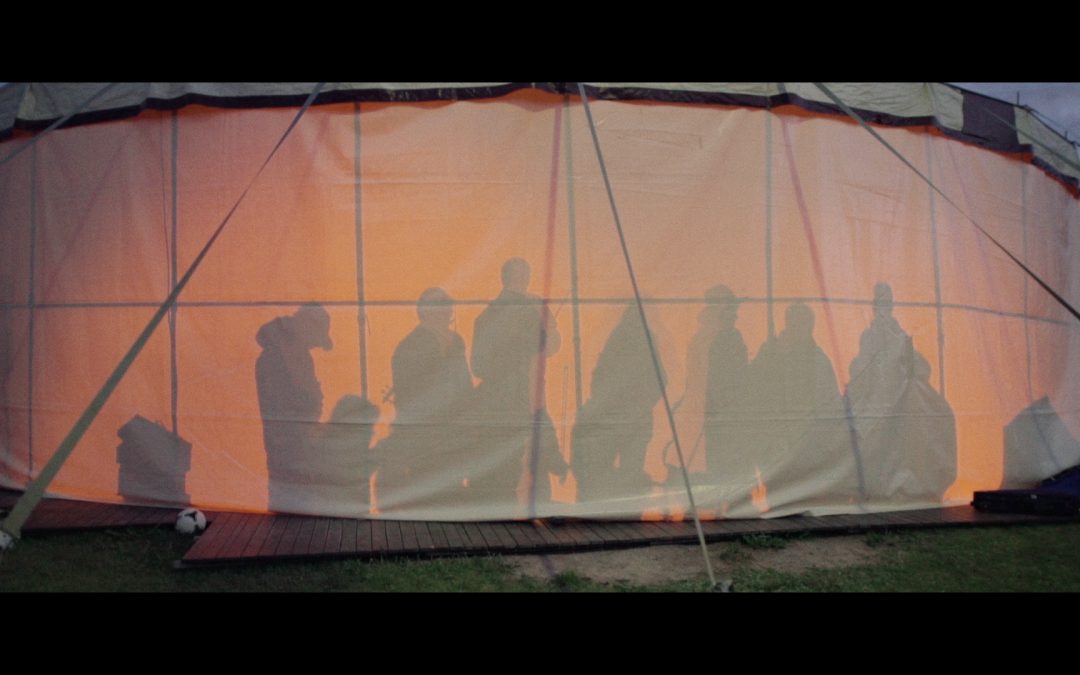Janusz Prusinowski – the project initiator and director
A long time ago, when I was just starting to play obereks and mazureks, I was not aware of the existence of a popular Swedish dance called polska. Imagine my surprise when on a trip to France we came across a group of Swedish musicians playing dance tunes that they called just that! Witek Broda, one of our travelling companions, instantly approached the musicians, who were still strangers to us then. He started the conversation by saying: „You’re playing my piece of music!”, and then just played a kujawiak tune. That very evening we ended up music-making with our new Swedish friends for hours, playing and dancing both Polish- and Swedish-style. We had a feeling that something unique was happening. The polska steps matched the kujawiak tunes that we played, and our polonaise dances fit perfectly the sophisticated melodies of the Swedish polskas. We discovered a new land, which – in a dream-like fashion – also belonged to our common past.
Since that night, we had been looking for paths that would help us return to that mystical experience; we also wanted to tell the world about it. As the artistic director of the “Mazurkas of the World” festival, each year I reserved some space during the event for a musical encounter with visitors from Scandinavia. I also organised special concerts (such as the “Baltic Union” in 2013). It soon turned out that Poland can be a popular destination for musicians from across the Baltic Sea, who are attracted by the chance of playing music together with old village masters, which is the best basis for all traditional music, including Scandinavian folk. Additionally, the presence of lecturers and students from various universities – such as the prestigious Kungliga Musikhögskolan (KMH) – was a huge support for the idea behind the “Mazurkas of the World” festival and gave us more international presence.
Thanks to this experience, I met Magnus Gustafsson – a musician, researcher and organiser, one of the leaders of the Swedish Musik i Syd association. Together, we started looking for an opportunity to create a project that would aim to bring together our past sense of community and the current similarities of the dances and music from both sides of the Baltic Sea, and also make this unusual and very little known story more familiar to the public in Poland, Scandinavia and the whole world. We decided to prepare a special concert and a CD, and make a film about this endeavour. We invited musicians, singers and dancers, who could contribute to the project both with their knowledge and experience, and their personal sensitivity and musicality. They include experts and practitioners of historical music (from Medieval to Romantic eras), students of old village masters from Sweden and Poland, reconstructors of old notations recording Polish dances (which can be found across Europe), academic lecturers and musical performers. The film documenting the project was made by Tomasz Knittel, an experienced director and an active participant in the traditional music revival.
We started from a meeting in Stockholm at the end of 2015, in the hospitable space of the KMH. In February 2016, a Swedish team arrived in Warsaw (the rehearsals took place in the private apartment of my in-laws), and in April, when the whole Folk Music Department from Stockholm (including lecturers and students) made an appearance at the Mazurkas of the World festival, we were already adding some final touches to our concert programme. Our first concert happened in July, at the Bingsjö festival. We played unplugged, in a small wooden church. It was a very successful premiere, everything sounded fantastic (including the shuffling and stomping of dancers’ feet on the wooden floor!). Naturally, the music-making, dancing, improvisation and other interactions happened around the clock, day and night (if that brief sunless period can be called a night), which is what the festival is all about. Soon after that, in Korrö, apart from a concert at a nice stage with a good sound system and platforms for dancers, our Polish team also played at a wild dance party, and all our singers sang in a small concert of old songs. The next opportunity to present our music came in September, when we performed in Stockholm. The public at the new concert hall of the KMH gave us a very warm welcome. The next day we had a recording session at the same venue, fantastically led by Magnus Lindström Kolterud and Hadrian Prett.
The character of the recordings on this CD is more “live” than “studio-made”. I hope that despite the imperfections resulting from our time limits they convey the idea and the spirit of our music-making, as well as the beauty, variety and similarities of our musical traditions.

